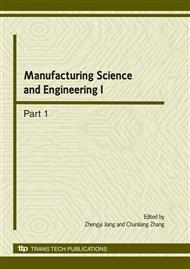p.250
p.255
p.260
p.264
p.268
p.273
p.278
p.282
p.286
Research of Geometric Parameters Related to TRB Uniaxial Tension
Abstract:
A discrete method was used to separate the thickness transition zone (TTZ) with continuous change of thickness. Uniaxial tension models, with different lengths of TTZ and different thickness ratios, were simulated to obtain the effect of geometric parameters on TRB uniaxial tension. The results showed that both length of TTZ and ratio of thickness had effect on elongation percentage. The elongation percentage increased significantly on the condition that the length of TTZ was 80mm, which was closed to total length of specimen (120mm); Thickness ratio had more effect on movement during uniaxial tension. The results could provide important technical reference for formulation of TRB uniaxial Tension Test standard and promote the light-weight application of TRB on the automobiles.
Info:
Periodical:
Pages:
268-272
Citation:
Online since:
March 2010
Authors:
Price:
Сopyright:
© 2010 Trans Tech Publications Ltd. All Rights Reserved
Share:
Citation:


